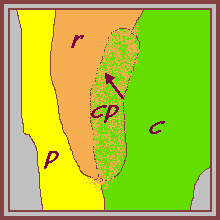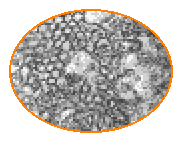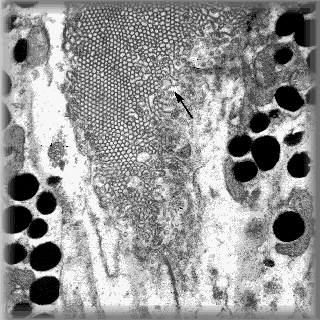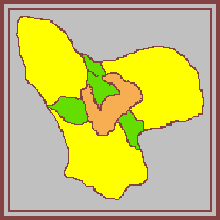| Here is the lateral view again, with that intriguing
arrow.
In fact, it points in the direction of the central axis of the rhabdom.
|
 It's a slightly oblique lateral view and you can see one of the retinula's peripheral cells (p) and its central cell (c), both contributing microvilii to the rhabdom (r). The stippled area in the diagram is where the central process (cp) of the central cell projects up the rhabdom base.
|
| You may remember that the rhabdom is the cylindrical structure running
up the centre of each retinula in the phalangid eye. It's made up of very
many microvilli, which are cylindrical folds of the cell membranes and
which can be seen in cross-section here as the small circular profiles
packing the rhabdom.
You can also make out in this micrograph the large number of small vesicles which lie close to the rhabdom, especially in the area mapped as the stippled patch by the cp in the diagram. Some are shown at higher magnification in the oval picture below.  These vesicles are a particularly interesting feature as they have some
interesting properties - more on this at a later date.
|
A transverse section of the rhabdom base is shown in this
diagram (corresponding to April's mystery picture), with the same colour-coding
as above.
The central cell (green) can be seen to divide into its three lateral processes and its central process in the middle of the base of the rhabdom. |
| The relationship between these cells and the rhabdom are emphasised in an animated diagram. | |


